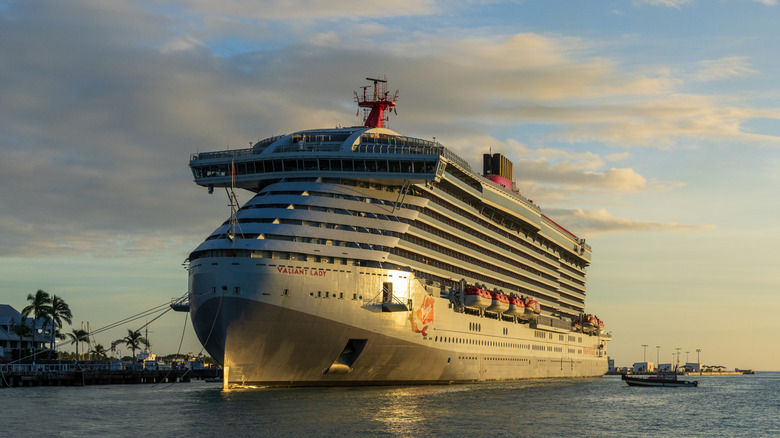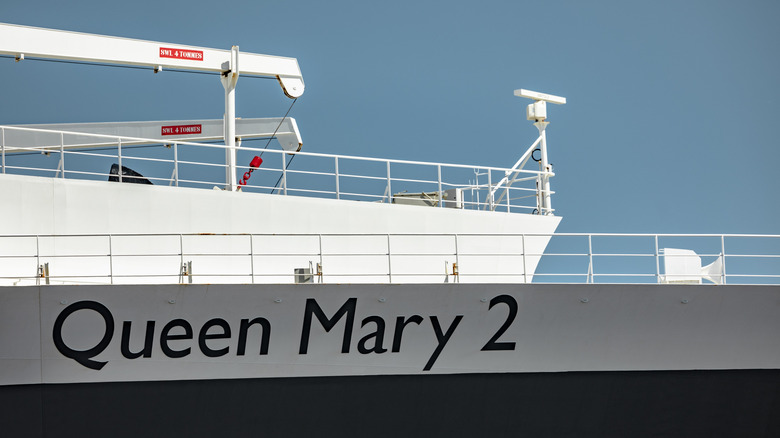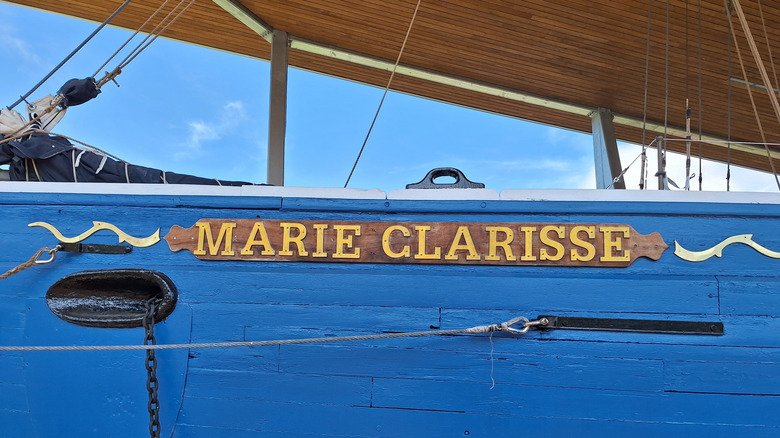Why Are Ships Given Female Names? A Look At The Tradition's History
Some of the most famous ships in history have sailed with female names on their hull. Queen Elizabeth. Mary Celeste. Lady Washington. Even now, seafarers still refer to vessels as "she." It doesn't matter whether it's a luxury cruise liner or one of the largest warships in military history. She's majestic. She's weathering the storm. She's due for maintenance. It even extends to adjacent terms like mothership and sistership.
It's not a hard rule, however. The Royal Navy, for instance, favors regal or martial names like Prince of Wales, Daring, or Defiant, and medium ships are commonly named after cities like Belfast or Cardiff. Other navies, like the U.S. or Russia, tend to name warships after historical figures. Still, the habit of referring to ships as female shows up often enough to make you wonder where it came from.
It's such a long-standing tradition that it's hard to trace its specific origins, but history offers a few solid clues.
Why ships are referred to as she
Part of it comes from superstition. In ancient maritime lore, the ocean was a wild, unpredictable force, and early sailors, mostly men, leaned into feminine personification to both respect and appease it. If the sea were a "she" (hello, tongue twister), and ships were the ones braving her moods, referring to them as female felt like a natural extension.
Ironically, these same sailors also believed that having women (or even their effigies) on board brought bad luck. HowStuffWorks cites a grim incident in the Middle Ages where a storm hit a ship carrying female passengers. Convinced they were the cause, the crew threw them overboard. Plot twist: the crew members still drowned. This belief faded over time, and with the growing inclusion of women aboard ships, a contradictory superstition took its place.
By the 19th century, female figureheads started showing up on ship bows and gradually became sailors' staple mascots. They could be carved figures of female royalty, in which case they were clothed, or mermaid figures in various stages of undress. The latter because some believed nudity could calm storms, a strange upgrade from an earlier belief that mermaids were sirens luring sailors to doom. Consistency is not superstition's strong suit.
There was also a sentimental layer to giving ships female names. Sailors often spent months (or even years) away from home, so they named their ships after wives, mothers, lovers — whoever they missed most. It made their humongous steel beast feel a little more like home and kept them emotionally afloat. Symbolism played a part, too. Ships are vessels that carry people, just as women are vessels in childbirth. That symbolic femininity also transferred to the graceful way a ship glides across water, which some likened to a woman's elegance.
Blame it on the grammar
Another explanation for why ships are referred to as "she" lies in language itself. Many European languages, including French, Spanish, and German, assign gender to nouns, and ships are often feminine by default. Latin, for instance, uses navis, a feminine noun, for ship. While navis isn't a direct ancestor of the English word "ship," English has borrowed extensively from Latin over time. Words like navigation, navy, and naval all stem from that same root.
Old English also had grammatical gender, and boats were frequently referred to in the feminine. Even as English gradually lost its gendered noun system, the tradition of calling ships "she" remained, possibly because it had become culturally ingrained. For example, Queen Elizabeth referred to the ship as female while christening the HMS Elizabeth (by the way, here's what HMS means on British ships, if you were wondering). You'd be speaking literal Queen's English if you followed suit — and many have.
It's worth noting that this isn't consistent across all languages. The English habit of using "she" for ships is less of a global norm and more of a linguistic tradition passed down through specific cultural and grammatical influences. In German, for example, das Schiff is grammatically neutral, while in Russian, корабль is masculine.
Still, it's a tradition that eventually sailed into language for other kinds of vehicles, too. People still refer to cars as "she," and planes as well — some of which even had women painted on them as nose art.


